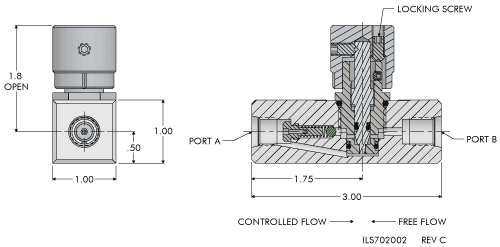Introduction:
Hot rolling mills operate under extreme conditions, including high temperatures and heavy loads. To optimize the performance and productivity of hot rolling mills, the implementation of model predictive control (MPC) systems has gained significant importance. In this article, we will explore the process of implementing MPC control in hot rolling mills and understand how it works.
What Are the Process to Implement MPC Control in Hot Rolling Mills?
Step 1: System Identification
The first step in implementing an MPC control system in a hot rolling mill is to conduct a system identification. This involves collecting data from the mill’s sensors and analyzing it to understand the dynamic behavior of the system. By accurately modeling the mill’s dynamics, a predictive control strategy can be developed.
Step 2: Model Development
Once the system identification is complete, the next step is to develop a mathematical model that represents the behavior of the hot rolling mill. This model takes into account various factors such as the material properties, mill configurations, and process constraints. Advanced techniques, such as neural networks or fuzzy logic, can be used to enhance the accuracy of the model.
Step 3: Controller Design
Based on the developed model, the MPC controller can be designed. MPC is an advanced control strategy that optimizes the control actions over a finite future time horizon, considering the predicted behavior of the system. The controller takes into account various process variables, such as temperature, speed, and thickness, to achieve the desired product quality and production rate.
Step 4: Implementation and Tuning
Once the MPC controller is designed, it needs to be implemented in the hot rolling mill’s control system. This involves integrating the controller with the mill’s automation system, configuring the control parameters, and tuning the controller’s performance. The tuning process ensures that the controller responds appropriately to changes in process conditions and provides the desired control action.
How Does MPC Control Work in Hot Rolling Mills?
MPC control in hot rolling mills works by continuously adjusting the control actions to optimize the mill’s performance and product quality. Here is a simplified explanation of how it works:
- Data Acquisition: Sensors installed in the mill measure various process variables such as temperature, speed, and thickness. These measurements are fed into the MPC controller.
- Model Predictions: The MPC controller utilizes the mathematical model developed during the implementation process to predict the future behavior of the system. It considers the current process conditions and the desired product specifications.
- Optimization: The MPC controller optimizes the control actions over a finite future time horizon. It calculates the optimal setpoints for various control variables, taking into account process constraints, such as temperature limits and speed limitations.
- Control Actions: The MPC controller sends the calculated setpoints to the mill’s actuators, such as motors and valves. These control actions manipulate the mill’s parameters, such as rolling speed, cooling rate, and tension, to achieve the desired product quality and production rate.
- Continuous Adaptation: As the process conditions change, the MPC controller continuously updates its predictions and adjusts the control actions accordingly. It ensures that the mill operates efficiently and effectively, even under varying operating conditions.
MPC control systems in hot rolling mills offer several benefits. They improve product quality by minimizing variations and defects, optimize production rates, reduce energy consumption, and extend the equipment’s lifespan. These systems also provide operators with real-time insights and diagnostics, enabling proactive maintenance and troubleshooting.
In conclusion, MPC control systems have revolutionized the operation of hot rolling mills. By implementing these advanced control strategies, mills can achieve higher efficiency, better product quality, and increased profitability. The process of implementing MPC control involves system identification, model development, controller design, and implementation. Once implemented, MPC control continuously adjusts control actions based on model predictions to optimize the mill’s performance. By embracing this technology, hot rolling mills can gain a competitive edge in the steel and metal industry.




